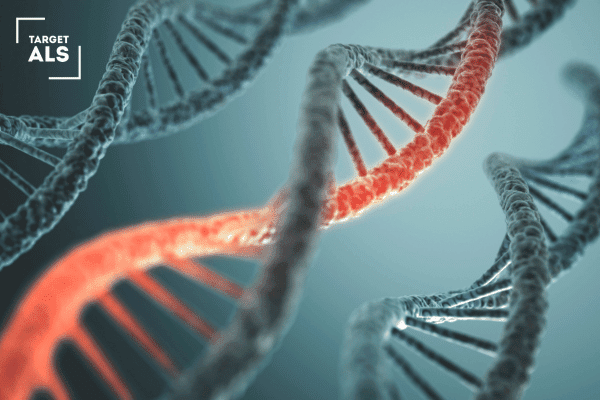When Dr. Stella Sarraf first asked if anyone looked at the retina to detect ALS, the answer was simple: no one knew. That question sparked a research journey that may change how we diagnose and screen for ALS and other neurodegenerative diseases. With the help of Target ALS’s postmortem tissue resources and collaborative network, Amydis is transforming a hypothesis into a clinical possibility—using the eye as a window into the brain.
A Tracer, an Idea, and a Cadaver Eye
Amydis, founded by Sarraf—a PhD chemist and former venture capitalist—is developing a novel fluorescent tracer that can detect TDP-43, the hallmark protein of ALS, in the retina. This could enable non-invasive, early detection of ALS through routine eye exams. But to validate the idea, they needed access to tissue—lots of it.
That’s where Target ALS came in.
“We got our first ALS cadaver eye from Dr. Brent Harris at Georgetown, and it changed everything,” said Sarraf. “We stained it, and the results were clear: TDP-43 was present in the retina. That single eye helped lead the path to NIH Phase I funding to support more cadaver tissue studies to validate the hypothesis. The compelling results from the study were submitted for a follow-up Phase 2 NIH grant, and we are thrilled to have received a notice of intent to fund from the NIH.”
Target ALS: More Than a Biobank
Target ALS’s postmortem tissue core, which includes the Georgetown Brain Bank, Washington University in St. Louis and four other sites, didn’t just supply samples. It laid the foundation for breakthroughs in ALS research for both academic institutions and biotech. For Amydis, access to high-quality, well-characterized tissue from confirmed ALS cases allowed them to prove what had never been shown before: pathological TDP-43 can be visualized in the eye with a novel tracer.
And not just in ALS. With Target ALS’s help, Amydis is expanding their tracer’s application to FTD and LATE—other TDP-43-driven diseases—with support from NIH.
A Diagnostic Frontier
The implications of a retinal-based TDP-43 test are profound. “Most patients don’t get to a neurologist until it’s too late,” said Sarraf. “But everyone sees an eye doctor due to changes in their eyesight. We want to bring ALS diagnostics and screening into the real world like Costco vision centers, not just academic hospitals.”
“The challenge is that there is currently no blood or brain test that positively diagnoses or identifies ALS. Instead, the current patient experience is focused upon excluding other diseases, which takes patients down a winding road with many tests, many doctors, and sometimes years until a final diagnosis is made,” said Dr. Alex Huang, the project’s medical lead and an ophthalmologist at UCSD.
Although Amydis isn’t creating a therapy—they’re building a diagnostic and screening tool that may have potential clinical utility in therapeutic development. “The ability to identify patients with TDP-43 pathology early and non-invasively could dramatically improve clinical trial design and drug targeting,” said Dr. Alex Huang.
The Target ALS Effect
What makes this story stand out isn’t just the science—it’s the speed. Amydis moved from a single cadaver sample to creating a collaborative consortium with other leading institutions with NIH grant support and a forthcoming human Phase II human clinical study in ALS participants in just a few years. That acceleration, they say, wouldn’t have happened without Target ALS.
“We’ve worked with Georgetown, WashU, MGH, Banner, and more—but it started with Target ALS. They’ve created an ecosystem where things move,” said Sarraf. “It’s not just the tissue. It’s the people. The introductions. The belief.”
Looking Ahead
Amydis is now seeking to set up a Phase 2 clinical trial at Mass General and preparing to raise funding to bring their eye test to ALS participants. If successful, it would mark a watershed in ALS screening and diagnostics—powered by a small molecule tracer, a community of researchers, and a nonprofit determined to remove barriers.
This is what it looks like when resources, collaboration, and bold ideas align. And it’s just the beginning.




